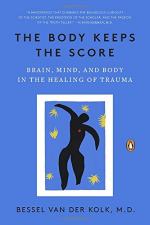
|
| Name: _________________________ | Period: ___________________ |
This quiz consists of 5 multiple choice and 5 short answer questions through Part Two: This is Your Brain on Trauma.
Multiple Choice Questions
1. What part of her client's body was the massage therapist holding when her client called out to see where she had gone?
(a) Her head.
(b) Her back.
(c) Her feet.
(d) Her neck.
2. One in how many Americans now takes an antidepressant medication, according to Van der Kolk?
(a) 20.
(b) 5.
(c) 7.
(d) 10.
3. In what year did Charles Darwin write The Expression of the Emotions in Man and Animals?
(a) 1872.
(b) 1901.
(c) 1836.
(d) 1854.
4. What is NOT one of the actions Van der Kolk says he hopes the reader will take in relation to trauma?
(a) Dismiss it.
(b) Prevent it.
(c) Explore it.
(d) Face it.
5. Tom, the patient Van der Kolk describes in Chapter 1: Lessons From Vietnam Veterans, had been in which branch of the military?
(a) The Marines.
(b) The Army.
(c) The Navy.
(d) The Air Force.
Short Answer Questions
1. What is the third option presented to an autonomic nervous system trying to navigate a dangerous situation?
2. In 1982, Van der Kolk accepted a position at a mental health center in what state?
3. What is the first option presented to an autonomic nervous system trying to navigate a dangerous situation?
4. What did Tom do for a living after he returned from Vietnam?
5. In Charles Darwin's book entitled The Expression of the Emotions in Man and Animals, he asserts that all but which of the following parts of the body communicate along the same nerve?
|
This section contains 256 words (approx. 1 page at 300 words per page) |

|




